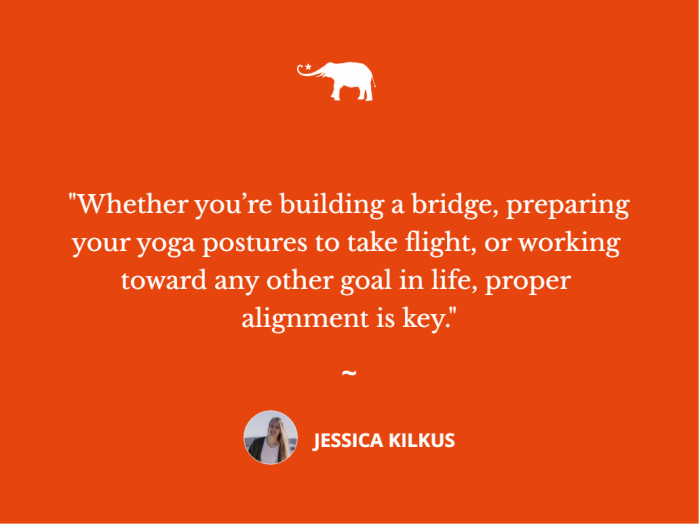A guide for success on the mat and in our lives:
1. Mindset
On the mat:
The first hurdle that many of us have to get over is our very own beliefs about ourselves. We scroll through Instagram photos and YouTube videos of people making amazing shapes with their bodies, and oftentimes, two thoughts come to mind: “I want to do that!” and “I could never do that…”
When we approach our practice from a place of limiting beliefs, we’ve already decided that we’re going to fail.
We always have an opportunity to choose to believe in the possibility of achieving something greater than we’d ever imagined. This is where the magic of arm balancing begins.
In our lives:
Much like the envy we carry for incredible yoga poses, we also tend to compare ourselves to others in countless ways. Whether we believe that someone is lucky or naturally gifted, we disempower ourselves when we choose to believe that what we long for is not achievable for ourselves.
Change your mindset, change your life.
2. Stack your sh*t.
On the mat:
Arm balancing and inversions are all about physics. Stacking the appropriate joints over one another correctly allows us to use the power of physics to our advantage to support our poses, rather than using sheer strength to “muscle into them.”
In our lives:
Whether you’re building a bridge, preparing your yoga postures to take flight, or working toward any other goal in life, proper alignment is key. To build a bridge, we align whatever building material we’re using. To fly an arm balance, we align our joints. To build our success in any other area, we must align our actions. Proper actions, built upon one another in proper order, are what inevitably build the ladder to our goals.
3. Trust yourself.
On the mat:
Balancing our body weight on our hands and flipping upside down is scary! In order to learn this skill, we must trust that with the proper instruction and consistent practice, we can keep our bodies safe. In the practice of arm balancing, the balance point is just past the point of comfort. We must trust ourselves to inch forward far enough to find that balance.
In our lives:
It’s natural to want to stay within our comfort zones when facing something that’s new (which is usually scary—fear of the unknown). The problem with this approach is that growth happens on the other side of fear. The further we lean into the things that we yearn for, the closer we get to the balance point that allows us to move forward.
4. Effective warm-up.
On the mat:
Nailing your arm balances and inversions requires the active engagement of key muscle groups, which vary depending on the pose you’re trying to achieve. When you prepare these muscles for engagement properly by working those same muscle groups, you are teaching your body the action that’s required of them. Doing this before taking it upside down into a balance pose increases your chances of success.
In our lives:
Whatever your goal is, preparing yourself for what it will take to achieve it ahead of time will be a key factor in your success rate. This may come in the form of reviewing presentation notes prior to giving a speech, or committing to an effective morning routine that sets your body and mind up to face the challenges of the day. Prior preparation is your friend.
5. Gaze.
On the mat:
Where you look is where you will go. If you want to find an ideal balance, you must set your gaze where you would like to go. In arm balancing, you mostly want to look forward, so you can shift your weight onto your properly stacked joints and engage your already-warm muscles to do the thing you want them to do.
If you look at the floor, you will fall to the floor.
In our lives:
Again, where you look is where you will go. If your focus is on worry, fear, or on past experiences, you will have an extremely hard time finding yourself anywhere but stuck in worry, fear, and in the past.
Shifting your focus toward success, creativity, and dedication will undoubtedly set you on a path in that direction, ultimately leading to your desired outcome.












Read 0 comments and reply